The amazing and unusual cuisine of Okinawa
And where to try it in Singapore
Novice Japanese food fans might not know this, but the archipelago of Okinawa is famous for more than just its US airbase. Due to its geographic isolation and its historic status as a trading port, it also has a food culture and cuisine unlike anything else you’ll find in Japan. Said to derive influences from China and Southeast Asia, Okinawan dishes feature robust flavors and indigenous ingredients. Here are some highlights to try—and where to do it in Singapore.
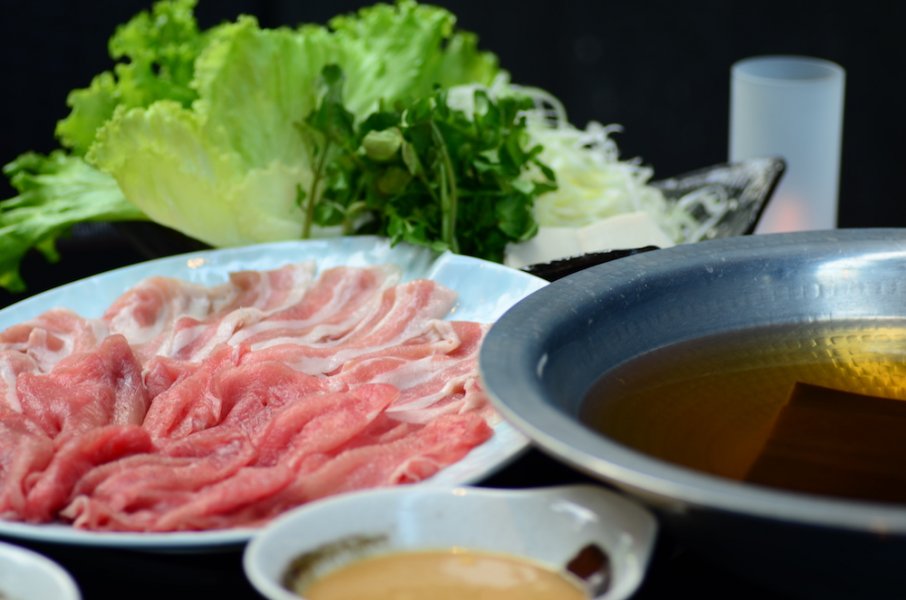
Okinawan cuisine is big on meat, especially pork, and the people of the island are famously said to consume every part of the animal. Agu is a breed of black pig indigenous to the land and due to its beef-like marbling, sweet taste and relatively small numbers, particularly after World War II, it is a prized meat.
Where to try it: Dashi Master Marusaya on Robertson Quay, famous for its nuanced and deep-flavored dashi stock, showcases agu pork in a simple, unadulterated way: slices of the meat are served alongside a hot pot full of stock, shabu shabu-style.
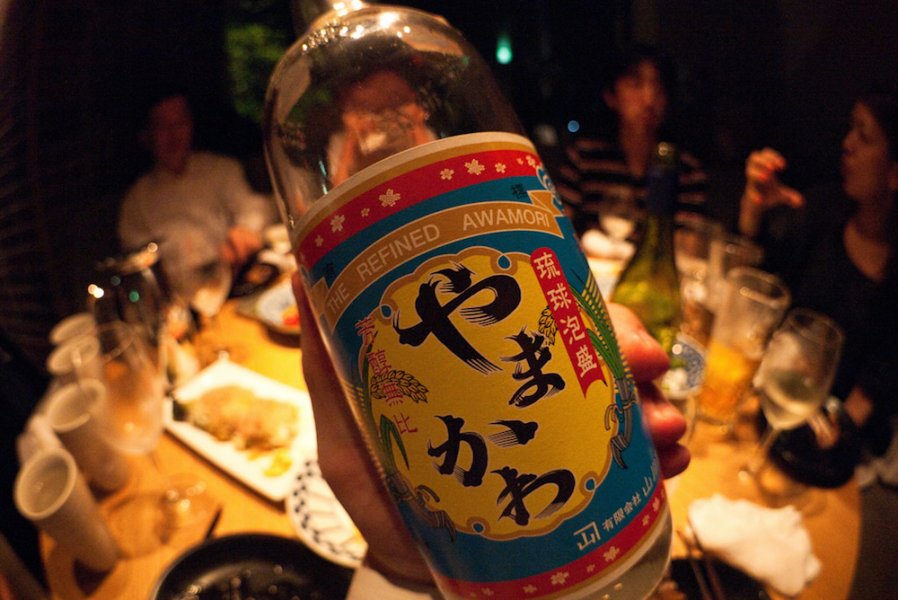
Photo credit flickr user nokton
This distilled spirit is traditionally made from rice grains indigenous to Okinawa—though today it is more likely to be made from Thai rice. Awamori is a more refined cousin of shochu and a popular drink for social gatherings on the island. It is enjoyed on the rocks, or splashed with a bit of water—although awamori cocktails are increasingly common.
Where to try it: The sleek, wood-panelled and perpetually packed izakaya En Japanese Dining Bar has a pretty wide selection of drinks, including several awamori.
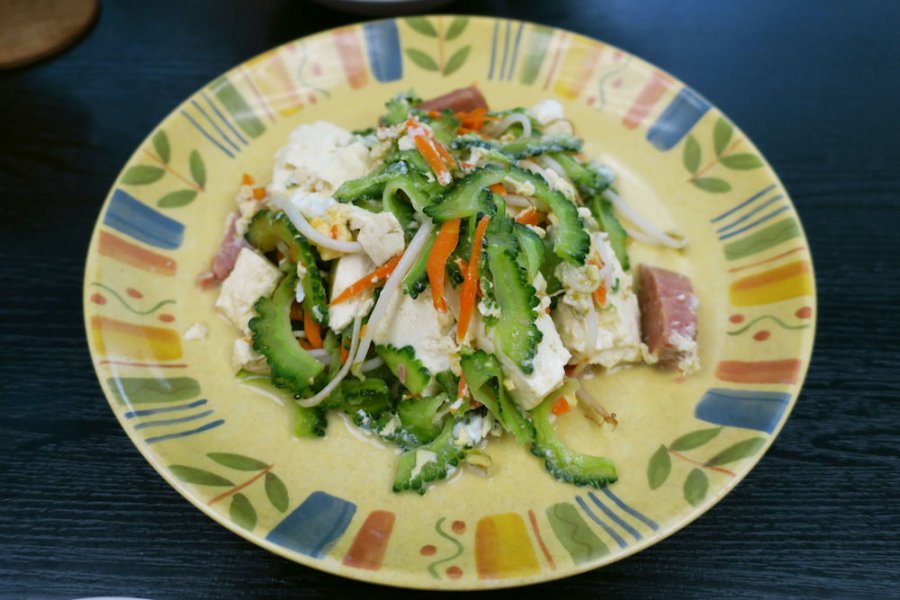
Photo credit flickr user ekkun
No primer on Okinawan cuisine would be complete without this dish. This stir-fry of bitter melon, tofu, pork and eggs is equal parts comforting and delicious. Goya refers to the bitter melon, which is a beloved vegetable on the island, and appears in many other forms, including salads and tempura.
Where to try it: Drinks aside, En Japanese Dining Bar’s menu features many Okinawan dishes, including this one.
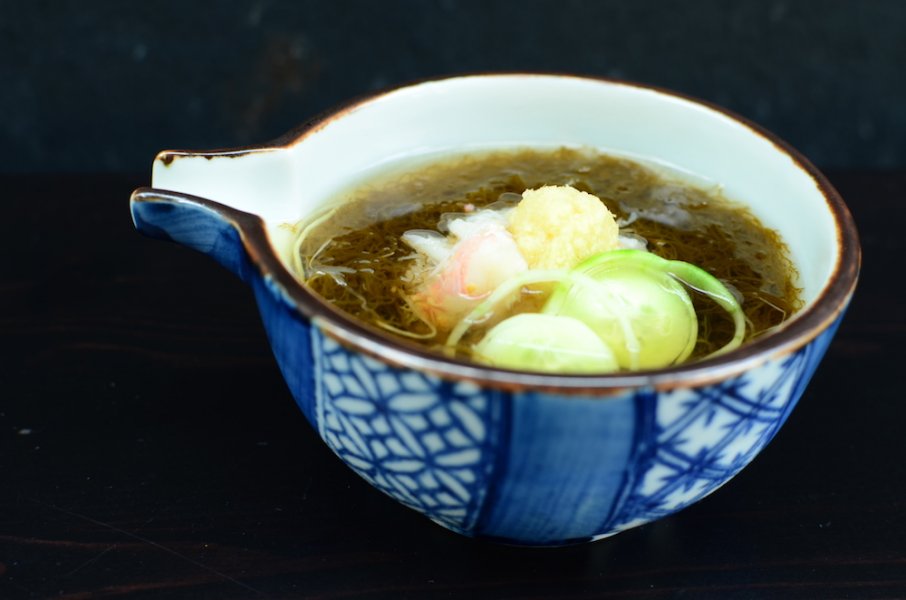
The mozuku seaweed found in the oceans of Okinawa is particularly famous for its thickness, packed nutrition profile, tumor-suppressing properties and low calorie count—making it both extremely healthy and also a great diet food.
Where to try it: Although not technically an Okinawan restaurant, Dashi Master Marusaya appreciates and employs the special properties of certain ingredients from the island. Along with agu pork, chef Eno also serves a light stew, involving her famous dashi, mozuku seaweed, spring onions and other seafood.
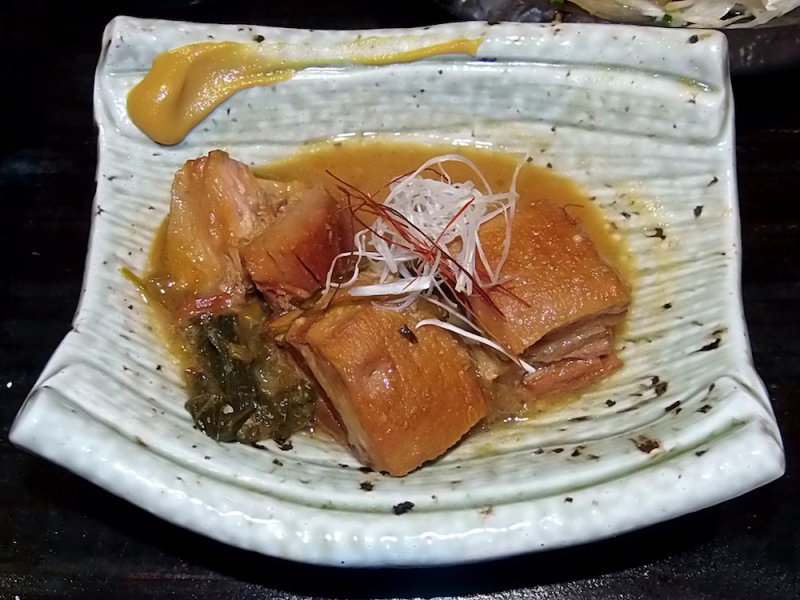
Photo credit flickr user Nemo's great uncle
Inspired by centuries of Chinese trade influence is this dish of long-braised pork belly. The skin is left on, and the pieces of meat are slow-stewed with soya sauce and brown sugar which gives the dish a rich glaze.
Where to get it: Tucked in the basement of Liang Court, already famous for its plethora of Japanese shops, restaurants and supermarket, is the all-Okinawan restaurant Nirai-Kanai (B1-01/02 177 River Valley Rd., 6339-4811). In addition to rafute, they also serve goya champuru and traditional Okinawa soba, among other dishes.
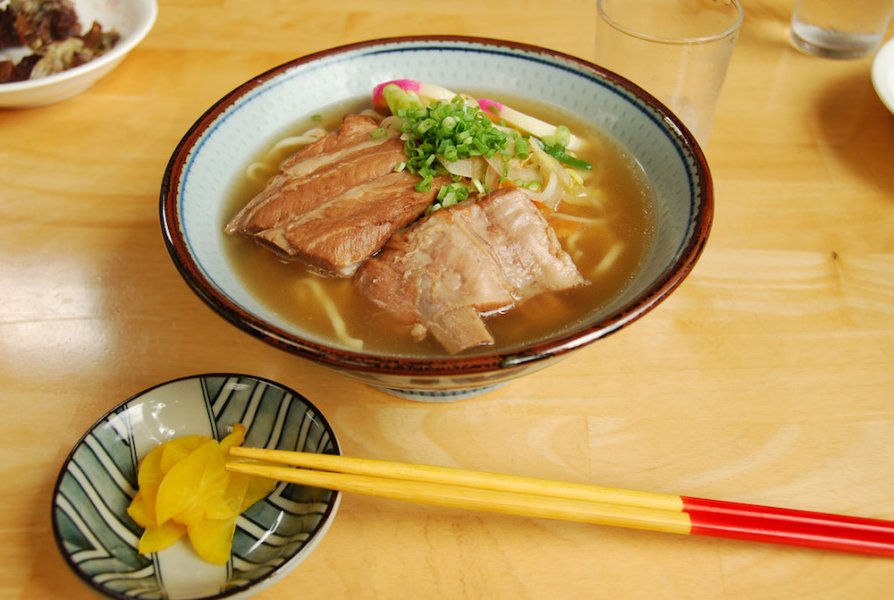
Photo credit flickr user sho(255)
Combining two great Okinawan food obsessions, pork and noodles, soki soba is a light noodle soup involving simmered, fall-off-the-bone pork spare rib, soft soba noodles and additions like tea-pickled eggs, pickles leeks and spring onions. The clear broth is simple, made with kelp, bonito flakes, sake and other flavorings.
Where to try it: It might not have a website or a Facebook page, but what Nirai Kanai does have is pretty much all the iconic dishes of Okinawa, including this one.
Like what you see? For regular updates on Japanese food and drink in Singapore, follow Bite! Japan on Facebook.
Advertisement